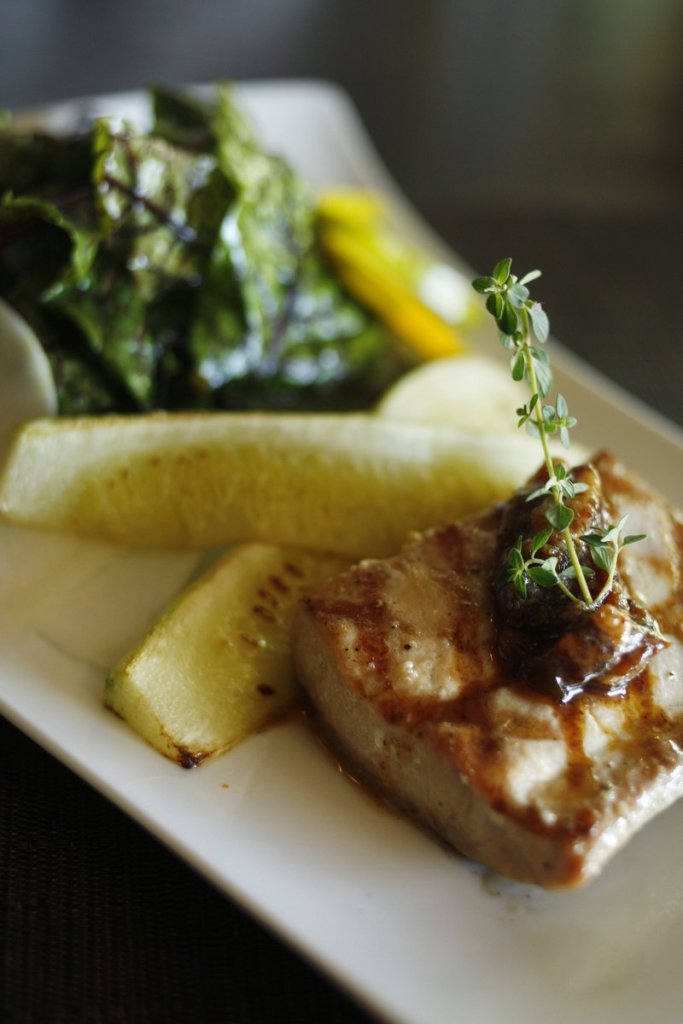Grilling fish and seafood can be intimidating.
Many of us either overcook the fish or undercook the fish or can’t pry the fish off the grill in one piece. We try special seafood grill baskets and every spatula in our kitchens with little improvement. We end up sacrificing more fillets and shellfish to the flames than we have eaten for dinner.
So we reached out to a handful of experts. They included: Katherine Alford, vice president of the test kitchen at Food Network Magazine; Barton Seaver, chef and author of “Where There’s Smoke,” and “For Cod and Country”; Jason Smith, chef and owner of 18 Seaboard and Cantina 18, both in Raleigh, N.C.; and Gene Briggs, chef and partner of Blue Restaurant & Bar and the chef at Osso Restaurant & Lounge, both in Charlotte, N.C.
All have their own techniques, and trial and error will determine the best approach. Here are a few key tips they agree on:
• The grill must be clean. Preheat the grill and then scrub off any food particles.
• The grill should be oiled. Dip a folded square of paper towel into a cooking oil. (Try an olive oil blended with canola oil, which has a good flavor but can handle higher temperatures.) Use tongs to rub the oiled paper towel along the grates. Do not spray a cooking oil, like Pam, on the grill when it’s heating. It will cause flames to flare up.
Here are more tips from the experts:
• Gene Briggs: Be patient.
Oil the fish or shellfish, which will help keep it from sticking.
Once the seafood or fish is placed on the grill, Briggs said, “Don’t touch it.”
Our instinct is to fuss with it, to move it, to feel like we’re cooking. And don’t panic. Fish will initially stick but will release once a crust develops. If you move the fish, the grate cools down and that process starts over again — increasing the likelihood that the fillet will fall apart.
• Katherine Alford: One step a time.
Start with shrimp and scallop kebabs, then graduate to fish steaks, like swordfish or tuna, then try foil packets for delicate fish. Food Network magazine ran a story last summer, “50 Things to Grill in Foil.”
Cook the seafood 75 percent of the way on one side, and then flip it to finish cooking the remaining 25 percent.
• Barton Seaver: Try brining.
Keep the fish skin on for grilling. It helps the fillet stay together and helps keep the fish from drying out.
Unlike our other experts, Seaver advocates a low-and-slow approach. He uses low heat on a gas grill or a small charcoal fire and places the seafood away from the flames. Then close the lid to create an oven-like effect.
Fish is done when it is opaque, the top of the fillet starts to flake and moisture can be seen pushing up through the fish. Seaver cooks fish until the internal temperature is 120-125 degrees. (Note: this differs from the federal government’s recommendation of cooking finfish to 145 degrees.)
In his cookbook, Seaver offers a recipe for fish brine, which appears below. Brining, Seaver said, helps season the fish throughout, strengthen the proteins before cooking and retain moisture.
• Jason Smith: Use fresh herb oil.
Smith bastes fish with a fresh herb oil, which is made by steeping flat-leaf parsley and basil stems in an olive oil blend. For shellfish, Smith uses butter because the shellfish is lean and can handle some fat.
Smith even dips his spatula in the herb oil or butter before removing seafood from the grill.
Watch the heat. A more delicate fish, like trout or catfish, needs high heat. A meatier fish, like swordfish or tuna, can cook over medium heat.
Send questions/comments to the editors.



Success. Please wait for the page to reload. If the page does not reload within 5 seconds, please refresh the page.
Enter your email and password to access comments.
Hi, to comment on stories you must . This profile is in addition to your subscription and website login.
Already have a commenting profile? .
Invalid username/password.
Please check your email to confirm and complete your registration.
Only subscribers are eligible to post comments. Please subscribe or login first for digital access. Here’s why.
Use the form below to reset your password. When you've submitted your account email, we will send an email with a reset code.